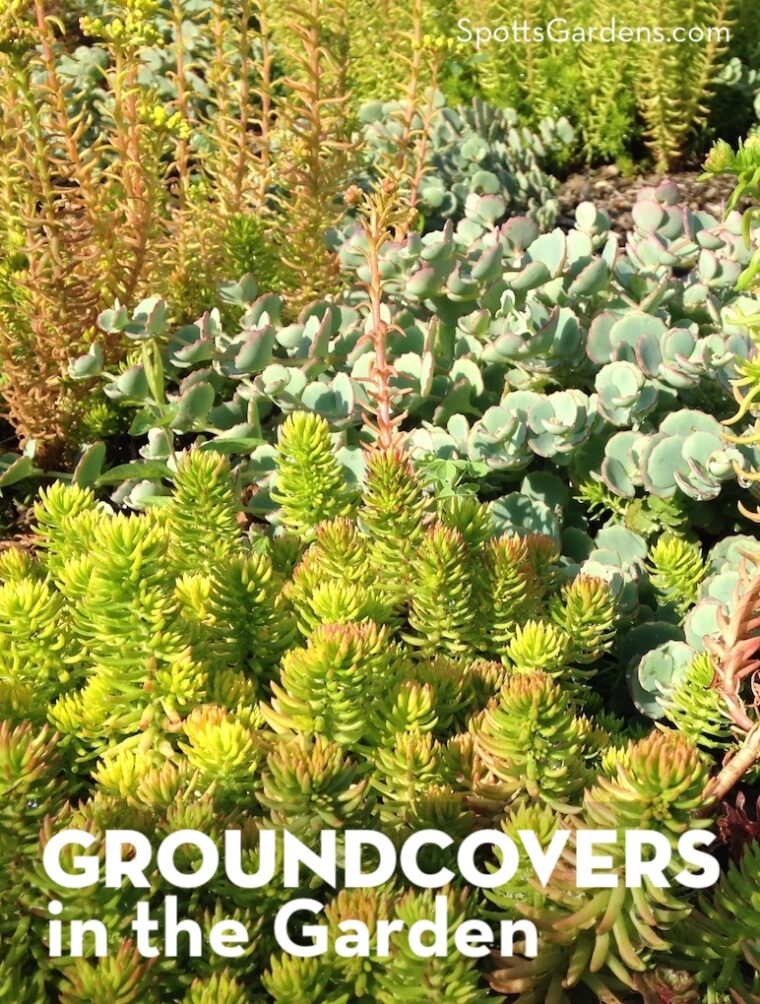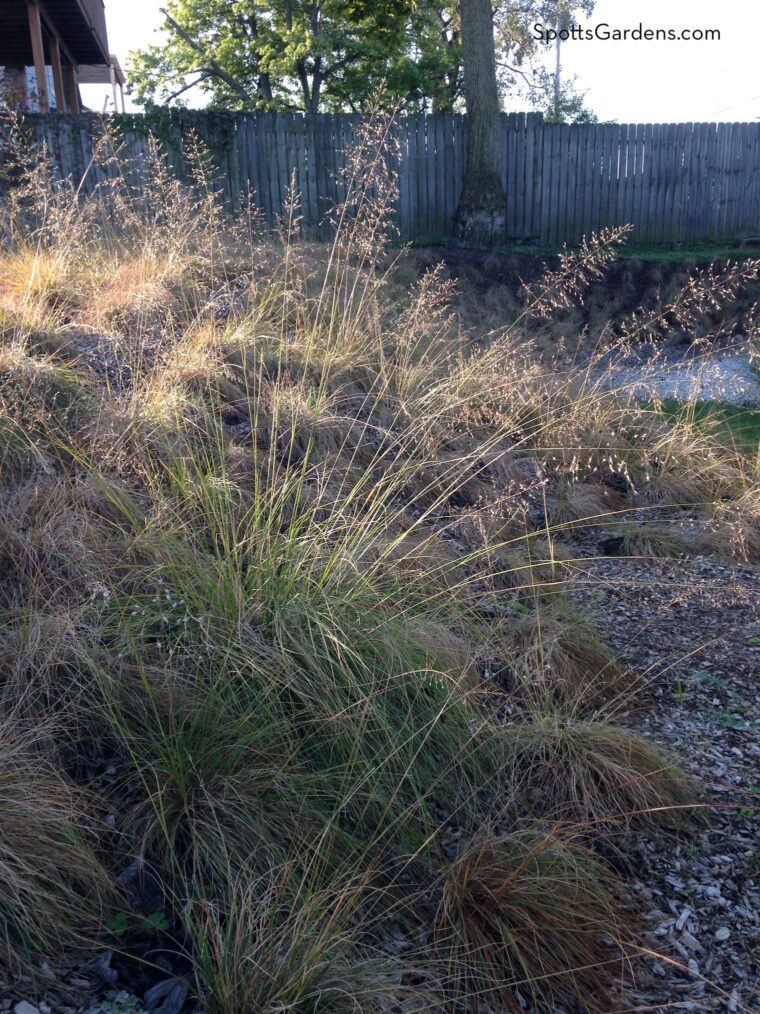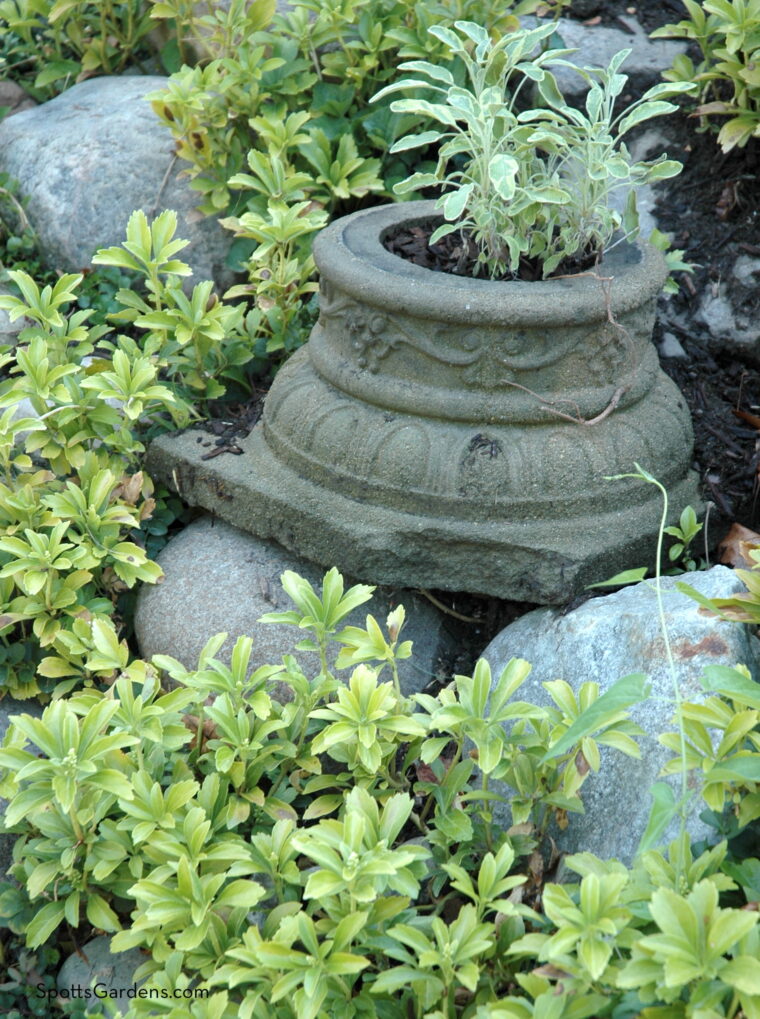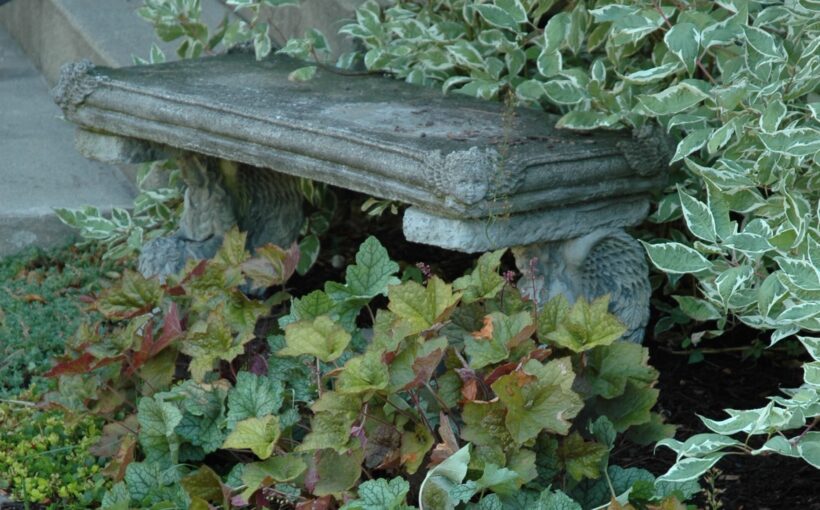Most people think of groundcovers as the “substitute” plants: ones that are only used where grass won’t create a lawn. But that’s such a waste! Groundcovers belong in every garden.
We consider groundcover to be any plant that grows lower than about 18″ and spreads out to fill in. We use groundcover alone, as a lawn substitute, as a border plant, or for underplanting. We plant a mix of them them under shrubs and larger perennials, where they hold down weeds and help retain moisture in the soil.
Used correctly, groundcovers can actually do away with the need for mulch. They can provide weed control, erosion control, and temperature regulation (by shading the ground). As their topgrowth dies and breaks down, it adds humus to the soil, improving fertility, tilth, and the soil’s ability to hold water.
Here are some of our favorites; add a few to your garden!

Groundcovers for Sunny Spots
Catmint (Nepeta spp.) The ultimate team player, catmint can handle full sun to part shade. It’s an ideal companion for roses (hiding their unsightly lower branches) and other garden border plants. Its growth habit is spreading, but it doesn’t actually root those spreading branches, so it’s well-behaved. For groundcover use, consider the shorter ones, like ‘Blue Wonder,’ ‘Purrsian Blue,’ and ‘Limelight’.
Creeping sedums (Sedum spp.; shown above) The low-growing sedums are ideal in full sun, dry spots. You can use an single species or create a tapestry effect by combining them. Our faves include ‘Angelina‘, ‘Dragon’s Blood,’ ‘Lidakense,’ and ‘Aureum.’
Cranesbill geranium (Geranium spp.) The hardy geraniums do well in full sun (although not a hot, dry spot) to part shade. For groundcover use, we’re particularly fond of ‘Biokovo‘ and its pink-flowered cousin, ‘Karmina.’
Prairie dropseed (Sporobolus heterolepis; shown below): This native Indiana grass is super in a border or used in mass as a no-mow groundcover. While the rounded grass tops out at about 2′, the plumes get taller. Plant it in full sun to light shade; it can handle both drought and inundation. Now that’s versatility!

Groundcovers for Shady Lanes
Coral bells (Heuchera spp.; in the top photo) A terrific choice for mixing into part-shade areas, coral bells make a great combination with sedges. For underplanting, bypass the fancy colored versions in favor of our native Heuchera americana (coral bells) or H. richardsonii (prairie alumroot). Both prefer part sun and moist, well-drained soil, but H. richardsonii can take dryish soil too.
Lily turf (Liriope spp.) The grass-like foliage of lily turf is a nice vertical accent in the shade garden and can even handle the dry shade at the base of trees. While it will grow in sun, too, it is less likely to spread rampantly in the shade. We like Liriope muscari, which we find better behaved than L. spicata.
Sedge (Carex spp.): These grass-like plants are our favorites for underplanting shrubs. With more than 150 species of Carex native to Indiana, you can find one for just about any location. Some can even be mown a couple of times a year to make a lawn. Our favorites include Carex brevior, C. pensylvanica, and C. radiata.
Spurge (Pachysandra spp.): Pachysandra can take nearly full shade. The shiny leaves of Japanese spurge (Pachysandra terminalis; shown below) lend it a formal look, especially when used en masse. Be aware that it’s prone to scale and fungal blight. Or consider our native Pachysandra procumbens instead.

The Hit List
Some extremely common ground covers should be taken out of circulation completely. While there are no bad plants, only misplaced ones, these are always misplaced when used in residential Indiana gardens. All four are on the Indiana invasive species list.
English ivy (Hedera helix): While an ivy-covered cottage sounds romantic, in reality that ivy is steadily pulling the mortar right out from between your bricks. It’s classified as a medium invasive plant on the Indiana invasive species list. If you already have it, keep it in bounds with regular trimming and edging. If you don’t, don’t plant it.
Snow on the mountain/bishop’s weed (Aegopodium podagraria): Whether you have the straight green version (bishop’s weed) or the white-and-green variegated one (snow on the mountain), this plant is aggressive. While not technically invasive, it will grow with abandon, eventually smothering the plants around it and then making forays elsewhere in the garden.
Periwinkle, creeping myrtle (Vinca minor) With starry blue flowers in spring, periwinkle is a popular groundcover. Unfortunately, its both invasive and not effective at suppressing weeds. It’s classified as a medium invasive plant on the the Indiana invasive plants list.
Wintercreeper (Euonymus fortunei): With its shiny green leaves on tough stems, this is an attractive, tough ground cover. In fact, it’s so tough it will eventually muscle out all plants in its vicinity, smother trees, and possibly consume small pets. It’s classified as highly invasive.

